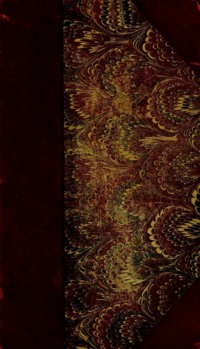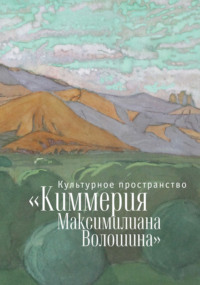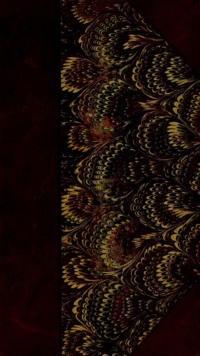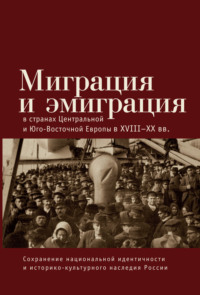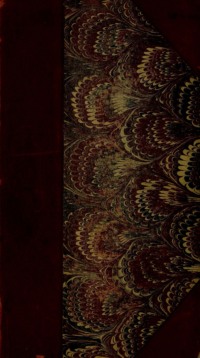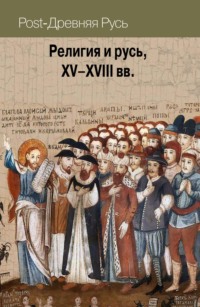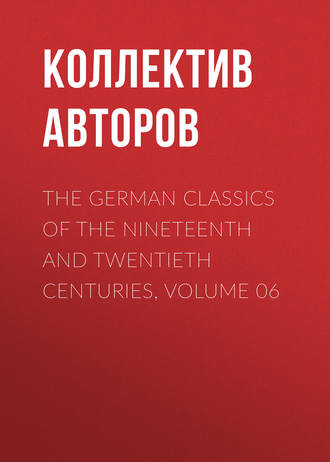 полная версия
полная версияThe German Classics of the Nineteenth and Twentieth Centuries, Volume 06
Classic art had only to represent the finite or determined, and its forms could be one and the same with the idea of the artist. Romantic art had to set forth, or rather signify, the infinite and purely spiritual, and it took refuge in a system of traditional, or rather of parabolistic symbols, as Christ himself had sought to render clear his spiritualistic ideas by all kinds of beautiful parables. Hence the mystical, problematic, marvelous, and transcendental in the artwork of the Middle Ages, in which fantasy makes her most desperate efforts to depict the purely spiritual by means of sensible images, and invents colossal follies, piling Pelion on Ossa and Parsifal on Titurel to attain to heaven.
Among other races where poetry attempted to display the infinite, and where monstrous fancies appeared, as, for instance, among the Scandinavians and Indians, we find poems which, being romantic, are given that classification.
We cannot say much as to the music of the Middle Ages, for original documents, which might have served for our guidance, are wanting. It was not till late in the sixteenth century that the masterpieces of Catholic church music, which cannot be too highly praised, appeared. These express in the most exquisite manner pure Christian spirituality. The recitative arts, which are spiritual from their very nature, could indeed flourish fairly in Christianity, yet it was less favorable to those of design, for as these had to represent the victory of mind over matter, and yet must use matter as the means wherewith to work, they had to solve a problem against Nature. Hence we find in sculpture and painting those revolting subjects—martyrdoms, crucifixions, dying saints, and the flesh crushed in every form. Such themes were martyrdom for sculpture; and when I contemplate those distorted images in which Christian asceticism and renunciation of the senses are expressed by distorted, pious heads, long thin arms, starveling legs, and awkwardly fitting garments, I feel an indescribable compassion for the artists of that time. The painters were indeed more favored, for the material for their work, because of its susceptivity to varied play of color, did not antagonize spirituality so obstinately as the material of the sculptors, and yet they were obliged to load the sighing canvas with the most repulsive forms of suffering. In truth, when we regard many galleries which contain nothing but scenes of bloodshed, scourging, and beheading, one might suppose that the old masters had painted for the collection of an executioner.
But human genius can transform and glorify even the unnatural; many painters solved this problem of making what was revolting beautiful and elevating—the Italians, especially, succeeding in paying tribute to beauty at the expense of spirituality, and in rising to that ideality which attained perfection in so many pictures of the Madonna. As regards this subject the Catholic clergy always made some concession to the physical. This image of immaculate beauty which is glorified by maternal love and suffering had the privilege of being made famous by poets and painters, and adorned with all charms of the sense, for it was a magnet which could attract the multitude to the lap of Christianity. Madonna Maria was the beautiful dame du comptoir of the Catholic Church, who, with her beautiful eyes, attracted and held fast its customers, especially the barbarians of the North.
Architecture had in the Middle Ages the same character as the other arts, as indeed all the manifestations of life then harmonized so marvelously with one another. The tendency to parable shows itself here, as in poetry. When we now enter a Gothic cathedral, we hardly suspect the esoteric sense of its stone symbolism; only a general impression pierces our soul; we realize an elevation of feeling and mortification of the flesh. The interior is a hollow cross, and we wander among the instruments of martyrdom itself; the variegated windows cast on us red and green light, like blood and corruption; funeral songs wail about us; under our feet are mortuary tablets and decay; and the soul soars with the colossal columns to a giddy height, tearing itself with pain from the body, which falls like a weary, worn-out garment to the ground. But when we behold the exteriors of these Gothic cathedrals, these enormous buildings which are wrought so aërially, so finely, delicately, transparently, cut as it were into such open work that one might take them for Brabant lace in marble, then we feel truly the power of that age which could so master stone itself that it seems spectrally transfused with spiritual life, and thus even the hardest material declares Christian spirituality.
But arts are only the mirror of life, and, as Catholicism died away, so its sounds grew fainter and its lights dimmer in art. During the Reformation Catholic song gradually disappeared in Europe, and in its place we see the long-slumbering poetry of Greece re-awakening to life. But it was only an artificial spring, a work of the gardener, not of the sun, and the trees and flowers were in close pots, and a glass canopy protected them from cold and northern winds.
In the world's history no event is the direct result of another; all events rather exert a mutual influence. It was by no means due only to the Greek scholars who emigrated to Europe after the fall of Byzantium that a love for Grecian culture and the desire to imitate it became so general among us; a similar Protestantism prevailed then in art as well as in life. Leo X., that splendid Medici, was as zealous a Protestant as Luther, and as there was a Latin prose protest in Wittenberg, so they protested poetically in Rome in stone, color, and ottaverime. And do not the mighty marble images of Michelangelo, the laughing nymphs of Giulio Romano, and the joyous intoxication of life in the verses of Ludovico Ariosto form a protesting opposition to the old, gloomy, worn-out Catholicism? The painters of Italy waged a polemic against priestdom which was perhaps more effective than that of the Saxon theologian. The blooming rosy flesh in the pictures of Titian is all Protestantism. The limbs of his Venus are more thorough theses than those which the German monk pasted on the church door of Wittenberg. Then it was that men felt as if suddenly freed from the force and pressure of a thousand years; the artists, most of all, again breathed freely as the nightmare of Christianity seemed to spin whirling from their breasts, and they threw themselves with enthusiasm into the sea of Greek joyousness from whose foam rose to them goddesses of beauty. Painters once more limned the ambrosial joys of Olympus; sculptors carved, with the joy of yore, old heroes from the marble; poets again sang the house of Atreus and Laius; and so the age of new classic poetry began.
As modern life was most perfectly developed in France under Louis XIV., so the new classic poetry received there its most finished perfection, and, in a measure, an independent originality. Through the political influence of that great king this poetry spread over Europe; in Italy, its home, it assumed a French color, and thence the heroes of French tragedy went with the Anjous to Spain; it passed with Henrietta Maria to England, and we Germans, as a matter of course, built our clumsy temples to the powdered Olympus of Versailles. The most famous high-priest of this religion was Gottsched, that wonderful long wig whom our dear Goethe has so admirably described in his memoirs.
Lessing was the literary Arminius who delivered our theatre from this foreign rule. He showed us the nothingness, the laughableness, the flat and faded folly of those imitations of the French theatre, which were in turn imitated from the Greek. But he became the founder of modern German literature, not only by his criticism, but by his own works of art. This man pursued with enthusiasm and sincerity art, theology, antiquity, and archæology, the art of poetry, history—all with the same zeal and to the same purpose. There lives and breathes in all his works the same great social idea, the same progressive humanity, the same religion of reason, whose John he was, and whose Messiah we await. This religion he always preached, but, alas! too often alone and in the desert. And there was one art only of which he knew nothing—that of changing stones into bread, for he consumed the greatest part of his life in poverty and under hard pressure—a curse which clings to nearly all great German geniuses, and will last, it may be, till ended by political freedom. Lessing was more inspired by political feelings than men supposed, a peculiarity which we do not find among his contemporaries, and we can now see for the first time what he meant in sketching the duo-despotism in Emilia Galotti. He was regarded then as a champion of freedom of thought and against clerical intolerance; for his theological writings were better understood. The fragments On the Education of the Human Race, which Eugène Rodrigue has translated into French, may give an idea of the vast comprehensiveness of Lessing's mind. The two critical works which exercised the most influence on art are his Hamburg Dramatic Art (Hamburgische Dramaturgie), and his Laokoon, or the Limits of Painting and Poetry. His most remarkable theatrical pieces are Emilia Galotti, Minna von Barnhelm, and Nathan the Wise.
Gotthold Ephraim Lessing was born at Camenz in Lausitz, January 22, 1729, and died in Brunswick, February 15, 1781. He was a thorough-going man who, when he destroyed something old in a battle, at the same time always created something new and better. "He was," says a German author, "like those pious Jews, who, during the second building of the Temple, were often troubled by attacks of the enemy, and so fought with one hand while with the other they worked at the house of God." This is not the place where I can say more of Lessing, but I cannot refrain from remarking that he is, of all who are recorded in the whole history of literature, the writer whom I love best.
I will here mention another author who worked in the same spirit, with the same object, as Lessing, and who may be regarded as his successor. It is true that his eulogy is here also out of place, since he occupies an altogether peculiar position in literature, and a unique relation to his time and to his contemporaries. It is Johann Gottfried Herder, born in 1744 at Mohrungen, in East Prussia, and who died at Weimar in the year 1803.
Literary history is the great "Morgue" where every one seeks his dead, those whom he loves or to whom he is related. When I see there, among so many dead who were of little interest, a Lessing or a Herder, with their noble, manly countenances, my heart throbs; I cannot pass them by without hastily kissing their dead lips.
Yet if Lessing did so much to destroy the habit of imitating French second-hand Greekdom, he still, by calling attention to the true works of art of Greek antiquity, gave an impulse to a new kind of ridiculous imitations. By his battling with religious superstition he advanced the sober search for clearer views which spread widely in Berlin, which had in the late blessed Nicolai its chief organ, and in the General German Library its arsenal. The most deplorable mediocrity began to show itself more repulsively than ever, and flatness and insipidity blew themselves up like the frog in the fable.
It is a great mistake to suppose that Goethe, who had already come before the world, was at once universally recognized as a writer of commanding genius. His Götz von Berlichingen and his Werther were received with a degree of enthusiasm, to be sure; but so, too, were the works of common bunglers, and Goethe had but a small niche in the temple of literature. As I have said, Götz and Werther had a spirited reception, but more on account of the subject-matter than their artistic merits, which very few appreciated in these masterworks. Götz was a dramatized romance of chivalry, and such writings were then the rage. In Werther the world saw the reproduction of a true story, that of young Jerusalem, who shot himself dead for love, and thereby, in those dead-calm days, made a great noise. People read with tears his touching letters; some shrewdly observed that the manner in which Werther had been banished from aristocratic society had increased his weariness of life. The discussion of suicide caused the book to be still more discussed; it occurred to several fools on this occasion to make away with themselves, and the book, owing to its subject, went off like a shot. The novels of August Lafontaine were just as much read, and, as this author wrote incessantly, he was more famous than Wolfgang von Goethe. Wieland was the great poet then, with whom perhaps might be classed the ode-maker, Rambler of Berlin. Wieland was honored idolatrously, far more at that time than Goethe. Iffland ruled the theatre with his dreary bourgeois dramas, and Kotzebue with his flat and frivolously witty jests.
It was in opposition to this literature that there sprang up in Germany, at the end of the last century, a school which we call the Romantic, and of which August Wilhelm and Friedrich Schlegel have presented themselves as managing agents. Jena, where these and many other souls in like accord found themselves "off and on," was the centre from which the new esthetic doctrine spread. I say doctrine, for this school began with judgments of the art-works of the past and recipes for art-works of the future, and in both directions the Schlegel school rendered great service to esthetic criticism. By judging of such works of art as already existed, either their faults and failures were indicated, or their merits and beauties brought to light. In controversy and in indicating artistic shortcomings, the Schlegels were entirely imitators of old Lessing; they obtained possession of his great battle-blade, but the arm of August William Schlegel was too tenderly weak and the eyes of his brother Friedrich too mystically clouded for the former to strike so strongly and the latter so keenly and accurately as Lessing. True, in descriptive criticism, where the beauties of a work of art are to be set forth—where it came to a delicate detection of its characteristics and bringing them home to our intelligence—then, compared to the Schlegels, old Lessing was nowhere. But what shall I say as to their recipes for preparing works of art? There we find in the Schlegels a weakness which we think may also be detected in Lessing; for the latter is as weak in affirming as he is strong in denying. He rarely succeeds in laying down a fundamental principle, still more seldom a correct one. He wants the firm basis of a philosophy or of a philosophical system. And this is still more sadly the case with the brothers Schlegel.
Much is fabled as to the influence of Fichtean Idealism and Schelling's Philosophy of Nature on the Romantic school, which is even declared to have sprung from it. But I see here, at the most, only the influence of certain fragments of thoughts from Fichte and Schelling, and not at all that of a philosophy. This may be explained on the simple ground that Fichte's philosophy had lost its hold, and Fichte himself had made it lose its interest by a mingling of tenets and ideas from Schelling; and because, on the other hand, Schelling had never set forth a philosophy, but only a vague philosophizing, an unsteady, vacillating improvisation of poetical philosophemes. It may be that it was from the Fichtean Idealism—that deeply ironical system, where the I is opposed to the not—I and annihilates it—that the Romantic school took the doctrine of irony which the late Solger especially developed, and which the Schlegels at first regarded as the soul of art, but which they subsequently found to be fruitless and exchanged for the more positive axioms of the Theory of Identity of Schelling. Schelling, who then taught in Jena, had indeed a great personal influence on the Romantic school; he is, what is not generally known in France, also a bit of a poet; and it is said that he was in doubt whether he should not deliver all his philosophical doctrines in a poetic or even metrical form. This doubt characterizes the man.
THE RABBI OF BACHARACH59 (1840)
With kindly greeting, the Legend of the Rabbi of Bacharach is dedicated to his friend HENRY LAUBE by the AUTHOR
A FRAGMENT
CHAPTER I
On the Lower Rhine, where its banks begin to lose their smiling aspect, where the hills and cliffs with their romantic ruined castles rise more defiantly, and a wilder, sterner majesty prevails, there lies, like a strange and fearful tale of olden times, the gloomy and ancient town of Bacharach. But these walls, with their toothless battlements and blind turrets, in whose nooks and niches the winds whistle and the sparrows build their nests, were not always so decayed and fallen, and in these poverty-stricken, repulsive muddy lanes which one sees through the ruined gate, there did not always reign that dreary silence which only now and then is broken by the crying of children, the scolding of women, and the lowing of cows. These walls were once proud and strong, and these lanes were alive with fresh, free life, power and pomp, joy and sorrow, much love and much hate. For Bacharach once belonged to those municipalities which were founded by the Romans during their rule on the Rhine; and its inhabitants, though the times which came after were very stormy, and though they had to submit first to the Hohenstaufen, and then to the Wittelsbach authority, managed, following the example of the other cities on the Rhine, to maintain a tolerably free commonwealth. This consisted of an alliance of separate social elements, in which the patrician elders and those of the guilds, who were subdivided according to their different trades, both strove for power; so that while they were bound in union to resist and guard against outside robber-nobles, they were, nevertheless, constantly having domestic dissensions over disputed interests. Consequently there was but little social intercourse, much mistrust, and not infrequently actual outbursts of passion. The ruling governor sat in his lofty castle of Sareck, and swooped down like his falcon, whenever he was called, and often when not called. The clergy ruled in darkness by darkening the souls of others. One of the most forsaken and helpless of the social elements, which had been gradually bound down by local laws, was the little Jewish community. This had first settled in Bacharach in the days of the Romans, and during the later persecution of the Jews it had taken in many a flock of fugitive co-religionists.
The great oppression of the Jews began with the crusades, and raged most furiously about the middle of the fourteenth century, at the end of the great pestilence, which, like all other great public disasters, was attributed to the Jews, because people declared they had drawn down the wrath of God, and, with the help of the lepers, had poisoned the wells. The enraged populace, especially the hordes of Flagellants, or half-naked men and women, who, lashing themselves for penance and singing a mad hymn to the Virgin, swept over South Germany and the Rhenish provinces, murdered in those days many thousand Jews, tortured others, or baptized them by force. There was another accusation which in earlier times and all through the Middle Ages, even to the beginning of the last century, cost much blood and suffering. This was the ridiculous story, recurring with disgusting frequency in chronicle and legend, that the Jews stole the consecrated wafer, and pierced it with knives till blood ran from it; and to this it was added that at the feast of the Passover the Jews slew Christian children to use their blood in the night sacrifice.
Consequently on the day of this festival the Jews, hated for their wealth, their religion, and the debts due to them, were entirely in the hands of their enemies, who could easily bring about their destruction by spreading the report of such a child-murder, and perhaps even secretly putting a bloody infant's corpse in the house of a Jew thus accused. Then at night they would attack the Jews at their prayers, and murder, plunder, and baptize them; and great miracles would be wrought by the dead child aforesaid, whom the Church would eventually canonize. Saint Werner is one of these holy beings, and in his honor the magnificent abbey of Oberwesel was founded. The latter is now one of the most beautiful ruins on the Rhine, and with the Gothic grandeur of its long ogival windows, proud and lofty pillars, and marvelous stone-carving, it strangely enchants us when we wander by it on some bright, green summer's day, and do not know the story of its origin. In honor of this saint there were also three great churches built on the Rhine, and innumerable Jews murdered and maltreated. All this happened in the year 1287; and in Bacharach, where one of these Saint Werner's churches stood, the Jews suffered much misery and persecution. However, they remained there for two centuries after, protected from such outbreaks of popular rage, though they were continually subject to spite and threats.
Yet the more they were oppressed by hate from without, the more earnestly and tenderly did the Jews of Bacharach cherish their domestic life within, and the deeper was the growth among them of piety and the fear of God. An ideal example of a life given to God was seen in their Rabbi Abraham, who, though still a young man, was famed far and wide for his learning. He was born in Bacharach, and his father, who had been the rabbi there before him, had charged him in his last will to devote his life to that office and never to leave the place unless for fear of life. This command, except for a cabinet full of rare books, was all that his parent, who had lived in poverty and learning, left him. Rabbi Abraham, however, was a very rich man, for he had married the only daughter of his father's brother, who had been a prosperous dealer in jewelry, and whose possessions he had inherited. A few gossips in the community hinted now and then that the Rabbi had married for money. But the women all denied this, declaring that the Rabbi, long ere he went to Spain, had been in love with "Beautiful Sara," and recalling how she had awaited his return for seven years, while, as a matter of fact, he had already wedded her against the will of her father, and even without her own consent, by the betrothal-ring. For every Jew can make a Jewish girl his lawful wife, if he can succeed in putting a ring on her finger, and say at the same time: "I take thee for my wife, according to the law of Moses and Israel." And when Spain was mentioned, the same gossips were wont to smile in the same significant manner, all because of a vague rumor that Rabbi Abraham, though he had studied the holy law industriously enough at the theological school in Toledo, had nevertheless followed Christian customs and become imbued with habits of free thinking, like many of the Spanish Jews who at that time had attained a very remarkable degree of culture.
And yet in the bottom of their hearts these gossips put no faith in such reports; for ever since his return from Spain the daily life of the Rabbi had been pure, pious, and earnest in every way. He performed every detail of all religious customs and ceremonies with painstaking conscientiousness; he fasted every Monday and Thursday—only on Sabbaths and feast days did he indulge in meat or wine; his time was passed in prayer and study; by day he taught the Law to students, whom his fame had drawn to Bacharach; and by night he gazed on the stars in heaven, or into the eyes of Beautiful Sara. His married life was childless, yet there was no lack of life or gaiety in his home. The great hall in his house, which stood near the synagogue, was open to the whole community, so that people went in and out without ceremony, some to offer short prayers, others to gather news, or to hold a consultation when in trouble. Here the children played on Sabbath mornings while the weekly "section" was being read; here people met for wedding and funeral processions, and quarreled or were reconciled; here, too, those who were cold found a warm stove, and those who were hungry, a well-spread table. And, moreover, the Rabbi, as well as his wife, had a multitude of relatives, brothers and sisters, with their wives and children, and an endless array of uncles and cousins, all of whom looked up to the Rabbi as the head of the family, and so made themselves at home in his house, never failing to dine with him on all great festivals.




